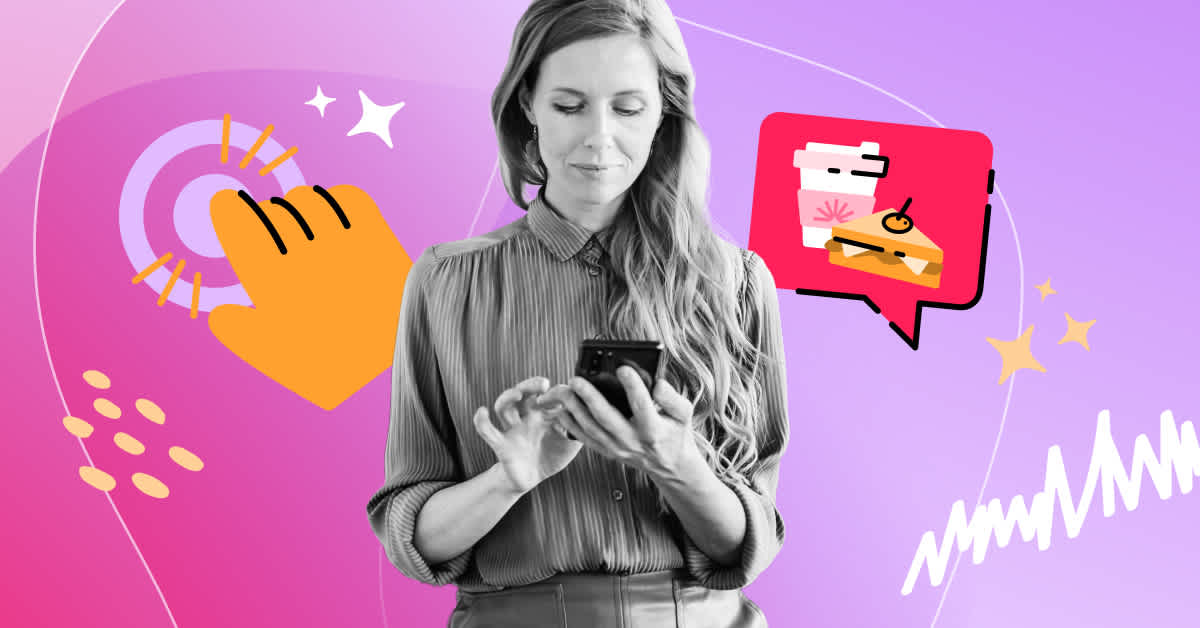Customer behavior trends in UX
According to recent data from Qualtrics, consumers are becoming increasingly difficult to please. Despite experiencing fewer negative interactions, they're more likely to pull back on spending after a single negative experience. They’re staying silent about their experiences—whether good or bad. They want personalized experiences but are uncomfortable with companies using unsolicited data to personalize their interactions.
This leaves brands stuck in a challenging spot, trying to create personalized, seamless experiences without crossing privacy boundaries or relying on direct feedback.
In 2025, success will depend on how well companies can read between the lines—anticipating needs without overstepping boundaries. Understanding what customers do and why they do it will be essential for crafting user experiences (UX) and user interfaces (UI) that delight.
→ Learn how behavioral data helps you interpret the why behind customer clicks.
7 UX and UI trends to help brands get ahead in 2025
1. Harnessing AI for unparalleled personalization
Users want to be treated as individuals rather than generic user segments. AI in user experience is transforming personalization, making interactions feel more intuitive and seamless. The most effective AI-driven personalization operates almost invisibly—think, Netflix adjusting your homepage based on viewing habits or Spotify creating weekly playlists that match your vibe perfectly. It's not about bombarding users with recommendations but about creating intuitive pathways that feel natural and effortless.
2. Immersive experiences that capture and keep attention
Attention spans are shrinking, and competition for user engagement is fierce. To keep up, brands are transforming their websites and apps from static information hubs into dynamic, interactive experiences. Think of Apple's product pages, where features unfold as you scroll. This kind of storytelling isn’t just for the big players anymore. Brands of all sizes can use navigation as an opportunity to take users on a journey. AI and VR also offer unprecedented opportunities to create immersive experiences—though they may not be right for every brand, they’re becoming increasingly accessible as tools for storytelling and engagement.
→ Learn from the best: See which major e-commerce created delightful shopping experiences during the biggest shopping week of 2024.
3. Security meets simplicity with passwordless authentication
The days of juggling multiple passwords are coming to an end. Modern authentication is moving toward a more natural approach that prioritizes security and user convenience. Face ID, fingerprint scanning, and one-time codes are becoming the new standard, making security feel less like a barrier and more like a seamless part of the user journey. This shift isn't just about convenience—it's about building trust. When users can access their accounts quickly and securely, they're more likely to stay engaged and return.
4. Minimalist designs that don’t overwhelm
In an age of AI-generated content and constant digital noise, information overload is a real challenge. Clean, uncluttered layouts help users get what they need when they need it. It’s not about stripping away features or oversimplifying—it’s about designing with intention. Your site or app should intuitively guide users to what they need and what you want them to discover, not frustrate them with chaos that leads to rage-clicking.
→ Not sure why your users keep bouncing? See how Fullstory can help.
5. The era of bold experimentation
Minimalism doesn’t have to mean playing it safe. Tools like Figma, Canva, and Adobe Firefly have broken down barriers, making professional-grade design accessible to small teams and tight budgets. This democratization of design means more diverse voices, perspectives, and creative risks will shape the future of digital experiences. From custom micro-interactions to immersive 3D visuals, brands that dare to push creative boundaries will stand out.
6. The power of micro-moments
Small interactions can make a big impact. Those tiny moments of feedback—a subtle animation when a user likes something, a smooth transition between pages, a gentle vibration confirming an action—create a polished and responsive experience. When done right, thoughtful micro-interactions create an emotional connection that turns routine tasks into delightful experiences that keep users engaged.
7. Boring data is so last year
User feedback is valuable, but sentiment speaks louder than words. In 2025, behavioral data is the new gold. By analyzing how users interact with digital products—where they click, what they ignore, and how they navigate—brands can unlock a more actionable understanding of user needs and preferences. This shift means designing with real user patterns in mind rather than acting on assumptions or best guesses.
To act on these trends, you need the right data—that’s where Fullstory comes in.
Fullstory helps brands like yours collect actionable insights that drive real results. Our platform captures every click, scroll, and interaction, helping you understand exactly how users experience your digital products.
Ready to transform your digital experience? Get a demo today and learn how behavioral data can help you build better digital experiences.



